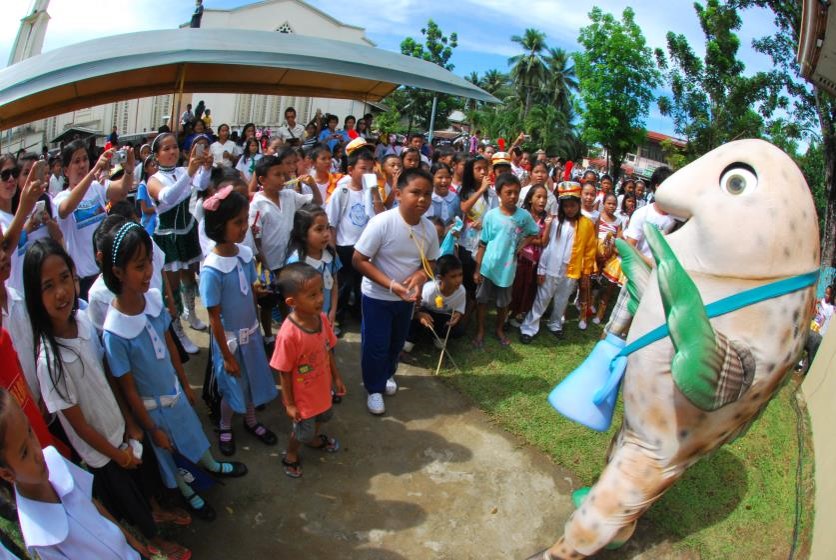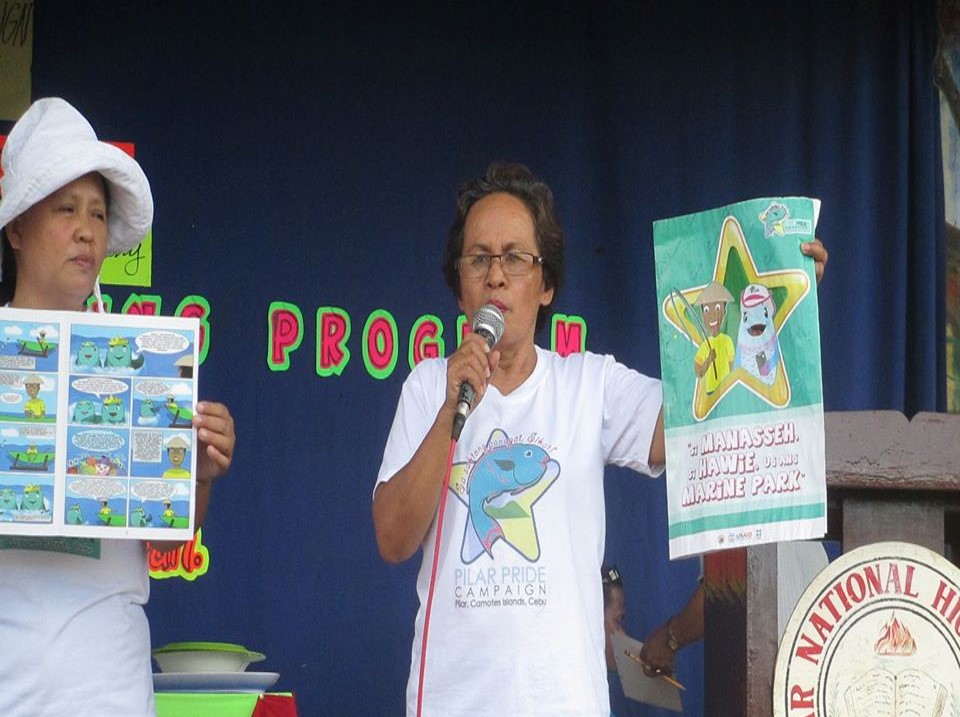
Shifting fishing norms in the Philippines

Project
Increase adoption of Marine Protected Area (MPA) fishing regulations in the Philippines.
Location
Multiple municipalities across the islands.
Client
National and municipal government units; USAID; Rare.
Protecting marine areas to ensure more fish for the future.
Even though MPAs were already established and well-known at these sites, there was still a high rate of illegal fishing both inside and outside the MPAs causing declines in coral health and fish populations, impacting both the environment and the livelihoods of fishers.

Grouper mascot in Lianga shares importance of MPA with fishers and their families
(photo: A.G. Sano)
Audience Insight
From qualitative research findings, it was determined that most fishers followed fishing rules only due to the presence of enforcement personnel, and when enforcement efforts decreased, intrusions into the MPA would increase. Therefore, it seemed there was not yet an established social norm among fishers to follow the rules, which was validated through quantitative research that showed fisher-to-fisher discussions about the importance of following MPA regulations was below 50%. Peer-to-peer discussion is critical for establishing a social norm and sustaining behavior over the long-term.

Caramoan mascot and enforcement team lead a boat parade to mark the MPA location
(photo: A.G. Sano)
Communication Strategy
“Fish in the right place using the right gear”. This strategy was chosen to create a social norm around the “right” way to fish while also being accessible enough for non-fishers to reinforce socially. The broad scope of “in the right place” and “right gear” provides flexibility for each municipality to identify specific regulations to promote, and it can expand to include new regulations that may be created in the future.

Campaign manager, Susan, in Pilar shares poster displaying qualities of a “star fisher”
(photo: Rare)
Outreach Plan
Outreach focused most heavily on increasing peer-to-peer discussion and promoting the desired behaviors to establish a reinforcing social norm around protecting the MPAs. This included a full marketing campaign with messages that communicated empowerment, efficacy, and pride around following MPA regulations with benefits that were personally meaningful to fishers (food security); hosting events and festivals that sparked enthusiasm and discussion around MPA benefits; and conducting more dynamic meetings and workshops among fishers on how to manage their coastal resources.

Caramoan enforcement team together with fishers proudly show-off campaign posters
(photo: A.G. Sano)
Results
On average, sites saw a statistically significant increase of 21.6pp for increasing conversations (from 48.5% to 70.1%). More than two-thirds of fishers have spoken with someone about the benefits of a well-enforced MPA; a strong indicator that the fishing community is developing more self-reinforcing social norms around legal fishing behaviors.
There was an 8.3pp increase in adoption of legal fishing behaviors (68.9% to 77.2%) which is good forward progress in reaching the majority of fishers, and sustained efforts at these sites will continue to increase behavior change.


